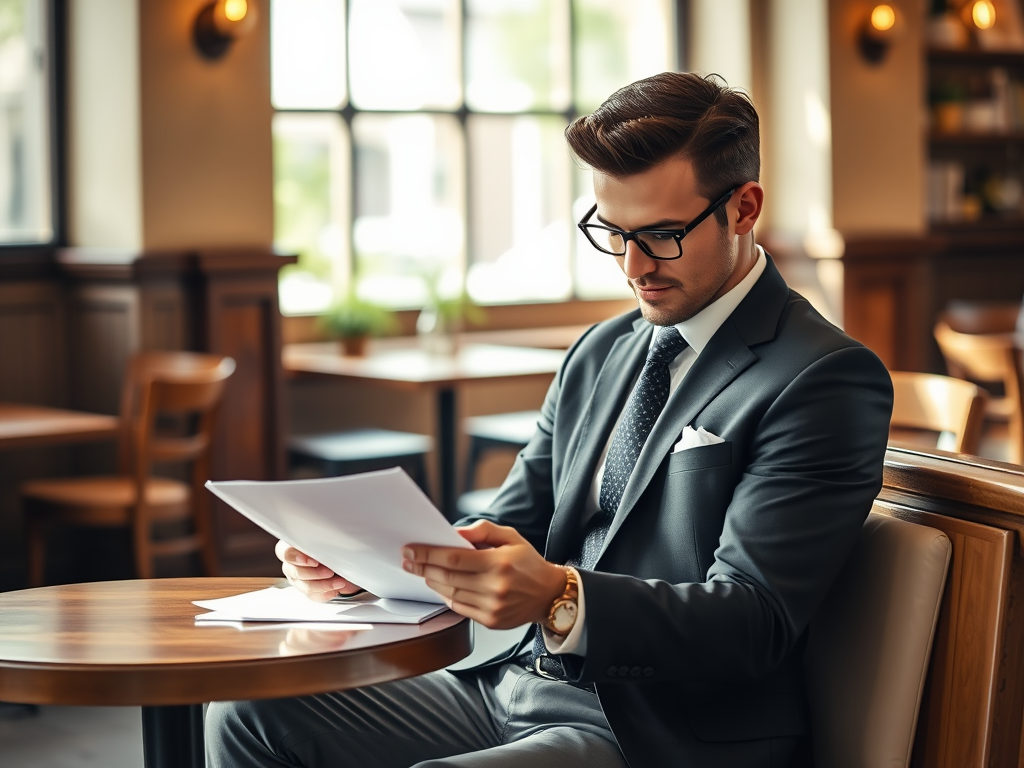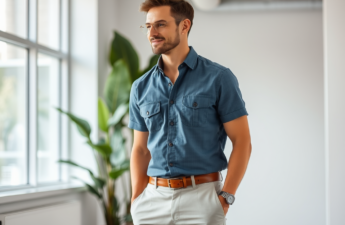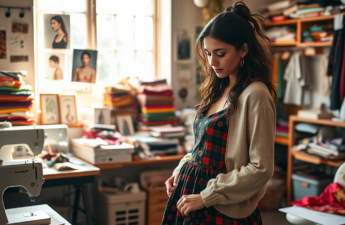Dressing in business casual attire is an art that blends professionalism with comfort. Balancing these two elements can be tricky, especially when the line between smart and casual is often blurred. Whether you are heading to a meeting, an interview, or a casual Friday at the office, getting your outfit right is essential for projecting an image of confidence and competence. Yet, many individuals unknowingly make mistakes that detract from their overall appearance:
In this article, we will explore the most common pitfalls in dressing business casual and provide practical solutions to avoid them. You might think you have it all figured out, but there are often nuances that can make or break your look. By understanding the subtleties of this dress code, you can ensure that your attire speaks volumes about your professionalism and attention to detail. Let’s dive into the details and enhance your wardrobe choices.
Understanding the Business Casual Dress Code

Business casual can sometimes be confusing, blending elements of formal and casual attire. It encompasses a wide range of styles that vary by industry, location, and occasion, making it essential to navigate this dress code effectively. Understanding its parameters allows you to curate outfits that are not just stylish but also appropriate. Dress codes are often evolving, so staying informed about the nuances in business casual attire is imperative.
Overlooking the Importance of Fit

One of the most frequent mistakes individuals make is wearing clothes that don’t fit properly. Overly loose or tight garments can detract from a polished appearance, making you come across as unprofessional. Even expensive clothing can look cheap if it doesn’t fit. It’s crucial to invest in your fit to enhance your silhouette and overall look. Well-fitted attire is not only more comfortable, but it also contributes positively to your confidence levels in professional settings.
Many people overlook the significance of tailoring in achieving the perfect business casual outfit. A tailor can alter garments to suit your unique body shape, offering both comfort and sophistication. Such adjustments can transform your wardrobe by ensuring that your attire flatters you, showcasing your personal style while adhering to professional standards.
Here are some style items that may benefit from tailoring:
- Dress shirts
- Blazers
- Pants (trousers and slacks)
Neglecting Footwear Choices
Shoes play a crucial role in defining a business casual outfit. They have the power to elevate or sink your ensemble significantly. For instance, wearing overly casual shoes can undermine the sophistication of your outfit. Sneakers may be trendy, but they can give off the impression of being too laid-back for a business setting. It’s important to choose shoes that align with the business casual standard to maintain an appropriate tone.
Below are footwear choices to steer clear of in a business casual setting:
- Flip-flops
- Canvas sneakers
- Open-toe sandals
| Shoe Type | Suitability for Business Casual |
|---|---|
| Loafers | Highly suitable; stylish and professional |
| Flats | Generally appropriate; comfort combined with style |
| Oxford shoes | Very suitable; classic and polished look |
| Casual sneakers | May be acceptable; ensure they are clean and in good condition |
Ignoring Dress Codes for Different Occasions
Business casual can differ based on the workplace environment or special events. Awareness of these variances is essential for discerning the right attire for each occasion. It’s vital to assess the context—what works in one office might not be appropriate in another. For instance, attending a corporate event may require a more polished look than a regular day at the office. Pay close attention to company culture and specific event requirements when selecting your outfit.
Consider the following factors when adjusting your outfit:
- The type of event (meeting, interview, etc.)
- The formality of the workplace culture
- Environmental factors like weather
Mismanaging Accessories
Accessories can significantly enhance your business casual look, while poor choices can detract from it. Choosing the right accessories involves striking a balance; they should complement your outfit without overwhelming it. Opt for simpler, understated pieces that add interest without being distracting. Aim for a cohesive look that aligns with the overall business casual aesthetic.
Some accessories that work well in a business casual setting include:
- Classic wristwatches
- Simple earrings or necklaces
- Belts that match your shoes
Conclusion
Dressing business casual may seem straightforward, but it involves attention to detail and awareness of context. By avoiding these common mistakes, you can confidently navigate your wardrobe while maintaining a professional image. Embrace the complexities of business casual attire to present the best version of yourself, ensuring that you leave a positive impression in all professional interactions. Mastering this dress code not only boosts your confidence but allows you to focus on what truly matters—your work.
Frequently Asked Questions
- What defines business casual attire? Business casual typically includes tailored pants, blouses, dress shirts, and closed-toe shoes, but varies by organization.
- Can I wear jeans in a business casual environment? Yes, but they should be dark, free of rips, and paired with a smart top to maintain a professional appearance.
- What types of shoes are suitable for business casual? Options include loafers, flats, and dressy ankle boots; avoid sneakers or flip-flops.
- Should I wear a blazer with my business casual outfit? A blazer can enhance your look, making it more polished, especially for meetings or presentations.
- How can I know if my outfit is appropriate for a business casual setting? When in doubt, observe what your colleagues wear, and always tailor your choices to specific work environments or events.



